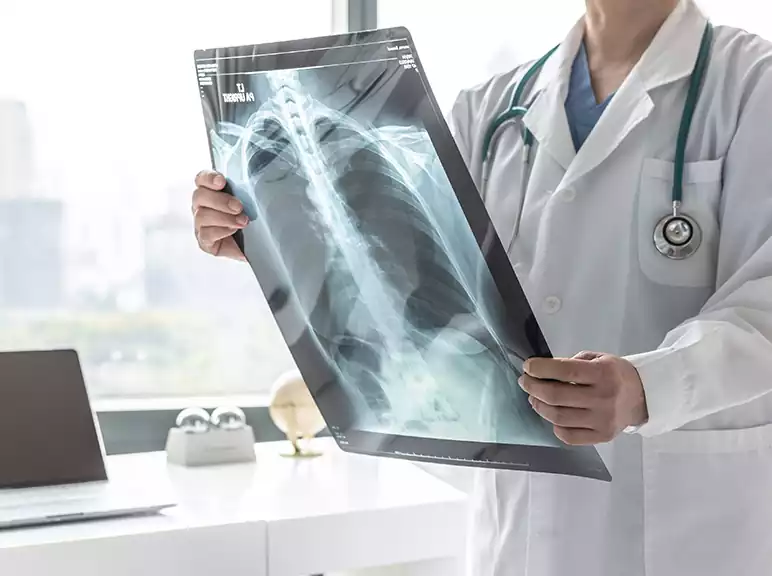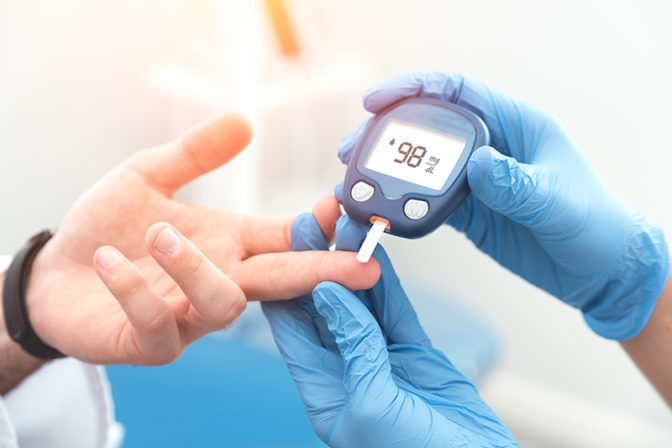Lung Diseases
Lung Diseases
Lung disease is the most common medical condition in the world. Smoking, infections, and genes cause the majority of lung diseases.
The lungs are a part of a complex system, expanding and relaxing thousands of times every day to deliver oxygen and carbon dioxide. When a problem exists in any part of the system, lung disease may occur. Lung Diseases Affecting the Airways the windpipe (trachea) branches into tubes called bronchi, which in turn become smaller tubes throughout your lungs. Diseases that may affect the airways include:
Asthma.
A person who has asthma have airways that are continuously inflamed and may spasm, causing wheezing and shortness of breath. Allergies, infections, or pollution can cause symptoms of asthma.
Chronic pulmonary obstructive disease (COPD)
With this condition, a person can’t exhale the way they usually do, which causes trouble breathing.
Chronic bronchitis,
This form of COPD is a long-term wet cough.
Emphysema.
Lung damage enables air to be trapped in your lungs in this form of COPD. The problem of blowing air out is its hallmark.
Acute bronchitis
Usually, a virus causes this sudden infection of the airways.
Cystic fibrosis
In this condition, a person has trouble clearing mucus out of the bronchi.
Lung Diseases Affecting the Air Sacs (Alveoli)
The airways branch into tiny tubes (bronchioles) that end in clusters of air sacs known as alveoli. These air sacs comprise of most of the lung tissue. Lung diseases affecting the alveoli are:
- Pneumonia. An infection of the alveoli, commonly caused by bacteria or viruses, including coronavirus which causes COVID-19.
- Tuberculosis Pneumonia that gets worse slowly, caused by the bacteria Mycobacterium tuberculosis.
- Emphysema. It happens when the links between alveoli are damaged. Smoking is the leading cause. (Emphysema also limits airflow, affecting the airways.)
- Pulmonary oedema. Fluid leaks out of the tiny blood vessels of the lung into the air sacs and the area surrounding them. One form is caused by backpressure in the lungs’ blood vessels and heart failure. In another form, injury to the lung causes fluid leakage.
- Lung cancer. It has many forms and can develop in any part of the lungs. It most often happens in the central part of your lung, in or near the air sacs.
- Acute respiratory distress syndrome (ARDS). A sudden, severe injury to the lungs from a critical illness. Many individuals who have ARDS need help breathing by a ventilator until their lungs usually function.
- Pneumoconiosis. This condition is caused by inhaling something that causes injury to the lungs. Example black lung disease from coal dust and asbestosis from asbestos dust.
Lung Diseases Affecting the Interstitium
The interstitium is the thin, delicate line between your alveoli. Small blood vessels run through the interstitium and allow the gas flow between the alveoli and the blood. Various diseases of the lung affect the interstitium:
- ILD (Interstitial Lung Disease). It is a group of lung diseases that include idiopathic pulmonary fibrosis, sarcoidosis, and autoimmune disease.
- Pneumonia and pulmonary oedema may also affect your interstitium.
Lung Diseases affecting the Blood Vessels
The right side of the heart gets low oxygen blood from your veins. It pumps blood through the pulmonary arteries into your lungs. These blood vessels may have diseases, too.
- Pulmonary embolism (PE). A blood clot (typically in a deep vein is called deep vein thrombosis) breaks down, travels to the heart, and is pumped into your lungs. The clot sticks in the pulmonary artery, frequently causing difficulty in breathing and low levels of oxygen in the blood.
- Pulmonary hypertension. Many conditions may cause high blood pressure in the pulmonary arteries. It could result in shortness of breath and pain in the chest. If your doctor cannot find a cause, it will be called idiopathic pulmonary arterial hypertension.
Lung Diseases affecting the Pleura
The Pleura is a thin liner that surrounds your lungs and lines the inside of your chest wall. A small layer of fluid allows the Pleura to slide along the chest wall with each breath on the surface of your lung. Pleura lung diseases include:
- Pleural effusion. Fluid collects in the space within your lungs and the wall of your chest. It is usually caused by pneumonia or heart failure. Large pleural effusions may make it hard to breathe and may require to be drained.
- Pneumothorax. Air can get into the space between your chest wall and the lung, collapsing the lung.
- Mesothelioma. It is an extraordinary form of cancer that develops on the Pleura. Mesothelioma tends to happen a few years after you get in contact with asbestos.
Lung Diseases Affecting the Chest Wall
Your chest wall also plays a vital role in breathing. Muscles connect your ribs and helping your chest expand. Your diaphragm drops with each breath and causes chest expansion as well. Diseases that affect your chest wall comprises:
- Obesity hypoventilation syndrome. Extra weight on your chest and stomach can make it difficult for your chest to expand. This syndrome may cause severe breathing issues.
- Neuromuscular disorders. You may have difficulty breathing when the nerves that regulate your respiratory muscles don’t perform the way they should. Myasthenia gravis and Amyotrophic lateral sclerosis are examples of neuromuscular pulmonary disease.








